The Zen of Technology & Scientific Discovery! (& Robots)
Collapse
X
-
I am sure, were you to pay the $23 million price tag, one might be had.
Or, you could improvise something like it with a garbage disposal, a cow milker and an old vacuum cleaner, perhaps.
Some other fun flush face:
Gassho, JBarely 100 pounds (45 kilograms) and just 28 inches (71 centimeters) tall, the new toilet is roughly half as big as the two Russian-built ones at the space station. It’s more camper-size to fit into the NASA Orion capsules that will carry astronauts to the moon in a few years.
Station residents will test it out for a few months. If the shakedown goes well, the toilet will be open for regular business.
With SpaceX now launching astronauts to the space station and Boeing less than a year from sending up its first crew, more toilets are needed. The new one will be in its own stall alongside the old one on the U.S. side of the outpost.
As for No. 1, the funnels also have been redesigned. Women can use the elongated and scooped-out funnels to urinate while sitting on the commode to poop at the same time, McKinley said. Until now, it’s been one or the other for female astronauts, she noted.
Like earlier space commodes, air suction, rather than water and gravity, removes the waste. Urine collected by the new toilet will be routed into NASA’s long-standing recycling system to produce water for drinking and cooking. Titanium and other tough alloys were chosen for the new toilet to withstand all the acid in the urine pretreatment.
Going to the bathroom in space may sound simple, but “sometimes the simple things become very difficult” without gravity, said NASA astronaut Mike Hopkins, commander of the second SpaceX crew, due to launch Oct. 31 from Kennedy Space Center.
While the old design isn’t that hard to use, subtle design changes can make all the difference for women, noted NASA astronaut Shannon Walker, a former space station resident who’s also on the next SpaceX crew.
“Trust me, I’ve got going to the bathroom in space down, because that is a vital, vital thing to know how to do,” she told The Associated Press earlier this week.
...
The last time NASA ordered up a new toilet was in the early 1990s to accommodate two-week space shuttle missions. The agency contracted with Collins Aerospace to provide the latest model; the company also worked on the shuttle potties.
Also in the 8,000-pound (3,600-kilogram) shipment aboard Northrop Grumman’s Cygnus capsule: air tanks to make up for a slight space station leak, radish seeds for greenhouse growing and a cinematic 360-degree VR camera for you-are-there-spacewalk shots.
Perhaps the most unique payload: Estee Lauder’s newest wrinkle serum. The cosmetics company is paying $128,000 for an out-of-this-world photo shoot, part of NASA’s push to open the final frontier to marketing, industry and tourism.
...
https://apnews.com/article/business-...8304af8e6a44fb
STLahLast edited by Jundo; 10-05-2020, 05:34 AM.ALL OF LIFE IS OUR TEMPLEComment
-
With the toilet being a central part of the urine/water recycling system, I guess, he would've found some teachings in there.
Using the (recycled) urine/sweat/breath-water for preparing drinks and food and washing oneself, reminds me on transcending thoughts like clean vs. dirty, useful vs. waste and with being made of mainly water ourselves, also me vs. others.
A model of the big cycles down here on earth; the carbon, oxygen and water, all livings share; we do not need the environment, we ARE the environment.
Gassho,
Kotei sat/lah today.義道 冴庭 / Gidō Kotei.Comment
-
No beginning, no end. I knew there was no escape!
“It is part of the "conformal cyclic cosmology" theory of the universe, and it is suggested that these points are the final expulsion of energy called ‘Hawking radiation’, transferred by black holes from the older universe."
"The Big Bang was not the beginning. There was something before the Big Bang and that something is what we will have in our future”.
Gassho
SatComment
-
I understand. When a universe reaches a certain advanced ago, its holes become a little leaky. At my age, I can start to relate to this a bit.No beginning, no end. I knew there was no escape!
“It is part of the "conformal cyclic cosmology" theory of the universe, and it is suggested that these points are the final expulsion of energy called ‘Hawking radiation’, transferred by black holes from the older universe."
"The Big Bang was not the beginning. There was something before the Big Bang and that something is what we will have in our future”.
Gassho
Sat
Gassho, J
STLahALL OF LIFE IS OUR TEMPLEComment
-
Some folks just got it easier ...
Gassho, J'Superhabitable' planets could be better for life than Earth
Earth is the only planet we know of so far to host life, but it may not be the best place for life when compared with "superhabitable" planets, according to a new study.
And as scientists search for other planets outside of our solar system, called exoplanets, that could host life, planets much like Earth may not be the best answer.
"We are so focused on finding a mirror image of Earth that we may overlook a planet that is even more well suited for life," said Dirk Schulze-Makuch, lead study author and professor for astrobiology and planetary habitability at Washington State University, in an email to CNN. The study published in the journal Astrobiology on Monday.
In the new study, Schulze-Makuch and his coauthors identified 24 exoplanets and exoplanet candidates (planets that have not been positively confirmed as exoplanets). They are all more than 100 light-years away, that could be contenders for superhabitable planets with conditions more suitable for life than Earth.
... Schulze-Makuch identifies a superhabitable planet as "any planet that has more biomass and biodiversity than our current Earth." Essentially, it would be slightly older, bigger, warmer and wetter than Earth, he said.
"The habitability of our planet has also changed throughout our natural history," he said. "For example, Earth in the Carboniferous Time Period with all the swamps and rainforest (that produced most of our current gas and oil) was likely more habitable -- superhabitable using our definition -- than Earth currently."
https://us.cnn.com/2020/10/07/world/...rnd/index.html
STLahALL OF LIFE IS OUR TEMPLEComment
-
We're heading for that period again. Digging up and burning all the Carbon (coal, gas and oil) and returning it to the active cycle.(...)
"The habitability of our planet has also changed throughout our natural history," he said. "For example, Earth in the Carboniferous Time Period with all the swamps and rainforest (that produced most of our current gas and oil) was likely more habitable -- superhabitable using our definition -- than Earth currently."
More habitable for life in general, but if an Earth, consisting of swamps, heat, rain and rainforests is more habitable for our current civilisation... well...
Gassho,
Kotei sat/lah today.Last edited by Kotei; 10-09-2020, 08:24 AM.義道 冴庭 / Gidō Kotei.Comment
-
A short, really interesting podcast interview with an ophthalmologist about the evolution of the eye.
The 600 Million Year History Of The Eye
Have you ever thought about how many different eyes see you over the course of a day? They’re not all human. Dogs, cats, birds, frogs, even insects watch us. Each with a different kind of eye. How did those eyes evolve, and what can they see? Ivan Schwab is an ophthalmologist who’s been fascinated by that question for a long time. Dogs, cats, birds, frogs, even insects watch us. Each with a different kind of eye. What, and how, do they see? Ivan Schwab is an ophthalmologist who’s been fascinated by that question for a long time.
Dogs, cats, birds, frogs, even insects watch us. Each with a different kind of eye. What, and how, do they see? Ivan Schwab is an ophthalmologist who’s been fascinated by that question for a long time.
Gassho, J
STLahALL OF LIFE IS OUR TEMPLEComment
-
More evidence for Einstein ... and smaller cracks for quantum mechanics to fit through ...
This supermassive black hole says "listen to Albert."
A new test of Albert Einstein's theory of general relativity has proved the iconic physicist right again — this time by re-analyzing the famous first-ever picture of a black hole , which was released in April 2019.
That image of the supermassive black hole at the center of galaxy M87 was the first direct observation of a black hole's shadow — the imprint of the event horizon, a sphere around the black hole's singularity from which no light can escape. Einstein's theory predicts the size of the event horizon based on the mass of the black hole; and in April 2019, it was already clear that the shadow fits general relativity's prediction pretty well.
But now, using a new technique to analyze the image, the researchers who made the picture showed just how well the shadow fits the theory. The answer: 500 times better than any test of relativity done in our solar system. That result, in turn, puts tighter limits on any theory that would seek to reconcile general relativity, which describes the behavior of massive celestial objects, with quantum mechanics, which predicts the behavior of very small things.
... General relativity must be incomplete, physicists believe, because it contradicts quantum mechanics. Physicists believe that discrepancy signals the presence in our universe of some larger, all-encompassing mechanism describing both gravity and the quantum world that they have yet to uncover. Looking for cracks in relativity, they hope, might turn up clues to help them find that complete theory. ...
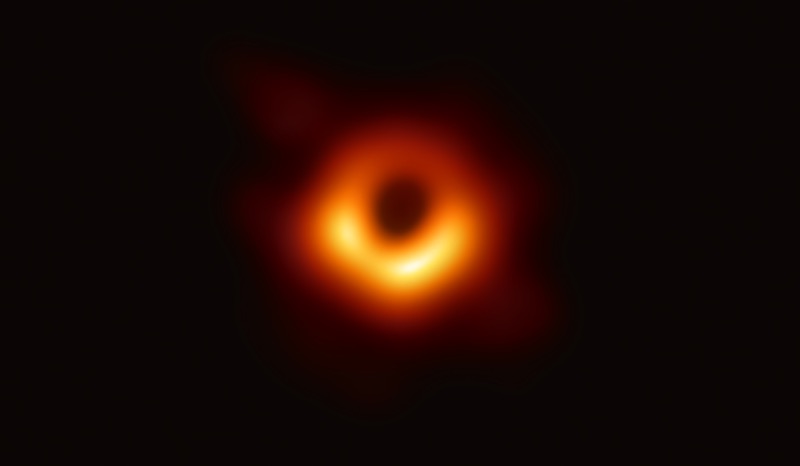 Physicists keep trying to break the rules of gravity but this supermassive black hole just said 'no'This supermassive black hole says "listen to Albert."
Physicists keep trying to break the rules of gravity but this supermassive black hole just said 'no'This supermassive black hole says "listen to Albert."
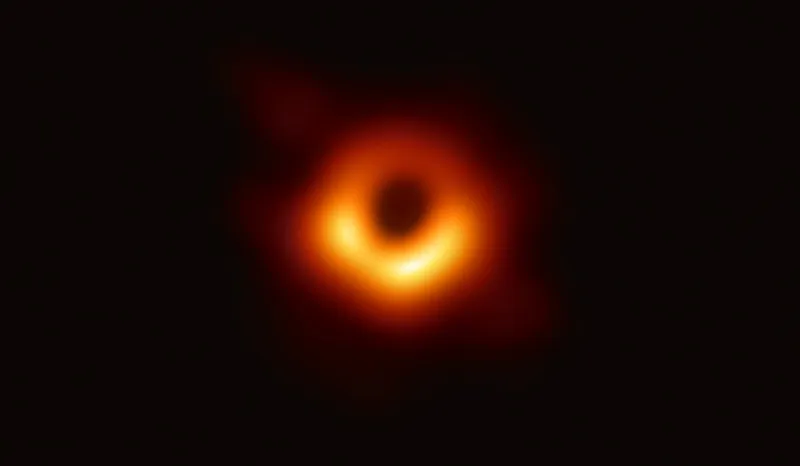
This is the first ever direct image of a black hole, with yellow ring surrounding a black circle. A new analysis of that inner shadow has reaffirmed Einstein's theory of gravity.
Gassho, J
STLahALL OF LIFE IS OUR TEMPLEComment
-
But we may be living in a simulation ... or not ... or both ... or something else ...
I wish that there were a simulated reality in which I understand half this stuff!Do We Live in a Simulation? Chances Are about 50–50
Gauging whether or not we dwell inside someone else’s computer may come down to advanced AI research—or measurements at the frontiers of cosmology
By Anil Ananthaswamy - Scientific American
... Neil deGrasse Tyson had just explained the simulation argument—the idea that we could be virtual beings living in a computer simulation. If so, the simulation would most likely create perceptions of reality on demand rather than simulate all of reality all the time—much like a video game optimized to render only the parts of a scene visible to a player. “Maybe that’s why we can’t travel faster than the speed of light, because if we could, we’d be able to get to another galaxy,” said Nice, the show’s co-host, prompting Tyson to gleefully interrupt. “Before they can program it,” the astrophysicist said, delighting at the thought. “So the programmer put in that limit.”
Such conversations may seem flippant. But ever since Nick Bostrom of the University of Oxford wrote a seminal paper about the simulation argument in 2003, philosophers, physicists, technologists and, yes, comedians have been grappling with the idea of our reality being a simulacrum. Some have tried to identify ways in which we can discern if we are simulated beings. Others have attempted to calculate the chance of us being virtual entities. Now a new analysis shows that the odds that we are living in base reality—meaning an existence that is not simulated—are pretty much even. But the study also demonstrates that if humans were to ever develop the ability to simulate conscious beings, the chances would overwhelmingly tilt in favor of us, too, being virtual denizens inside someone else’s computer. (A caveat to that conclusion is that there is little agreement about what the term “consciousness” means, let alone how one might go about simulating it.)
... To get a better handle on Bostrom’s simulation argument, Kipping decided to resort to Bayesian reasoning. This type of analysis uses Bayes’s theorem, named after Thomas Bayes, an 18th-century English statistician and minister. Bayesian analysis allows one to calculate the odds of something happening (called the “posterior” probability) by first making assumptions about the thing being analyzed (assigning it a “prior” probability).
... Plug all these into a Bayesian formula, and out comes the answer: the posterior probability that we are living in base reality is almost the same as the posterior probability that we are a simulation—with the odds tilting in favor of base reality by just a smidgen.
These probabilities would change dramatically if humans created a simulation with conscious beings inside it, because such an event would change the chances that we previously assigned to the physical hypothesis. “You can just exclude that [hypothesis] right off the bat. Then you are only left with the simulation hypothesis,” Kipping says. “The day we invent that technology, it flips the odds from a little bit better than 50–50 that we are real to almost certainly we are not real, according to these calculations. It’d be a very strange celebration of our genius that day.”
... Houman Owhadi, an expert on computational mathematics at the California Institute of Technology, has thought about the question. “If the simulation has infinite computing power, there is no way you’re going to see that you’re living in a virtual reality, because it could compute whatever you want to the degree of realism you want,” he says. “If this thing can be detected, you have to start from the principle that [it has] limited computational resources.” Think again of video games, many of which rely on clever programming to minimize the computation required to construct a virtual world.
... Zohreh Davoudi, a physicist at the University of Maryland, College Park, has also entertained the idea that a simulation with finite computing resources could reveal itself. Her work focuses on strong interactions, or the strong nuclear force—one of nature’s four fundamental forces. ... [Also] If our reality is a simulation, then the simulator is likely also discretizing spacetime to save on computing resources (assuming, of course, that it is using the same mechanisms as our physicists for that simulation). Signatures of such discrete spacetime could potentially be seen in the directions high-energy cosmic rays arrive from: they would have a preferred direction in the sky because of the breaking of so-called rotational symmetry. ...
... Kipping, despite his own study, worries that further work on the simulation hypothesis is on thin ice. “It’s arguably not testable as to whether we live in a simulation or not,” he says. “If it’s not falsifiable, then how can you claim it’s really science?” For him, there is a more obvious answer: Occam’s razor, which says that in the absence of other evidence, the simplest explanation is more likely to be correct. The simulation hypothesis is elaborate, presuming realities nested upon realities, as well as simulated entities that can never tell that they are inside a simulation. “Because it is such an overly complicated, elaborate model in the first place, by Occam’s razor, it really should be disfavored, compared to the simple natural explanation,” Kipping says. ...

Gassho, J
STLahALL OF LIFE IS OUR TEMPLEComment
-
Well, at least we won't have to worry about Netflix and Facebook on the moon, though how about reception into the craters?
Gassho, JNASA and Nokia are putting a 4G network on the moon
To reach its 2028 goal to build a lunar base and eventually sustain a human presence on the moon, NASA awarded $370 million to over a dozen companies to deploy technology on the lunar surface. Those innovations include remote power generation, cryogenic freezing, robotics, safer landing ... and 4G. Because how else will astronauts tweet their moon golf shots and lunar rover selfies?
NASA says 4G could provide more reliable, longer-distance communication than the current radio standards in place on the moon. Like on Earth, the 4G network will eventually be upgraded to 5G.[
https://us.cnn.com/2020/10/18/tech/4...rnd/index.html
STLah
PS - I saw an amazing document on Netflix (about companies like Netflix in fact), and I recommend it to all even if you think you already understand the dark side of social media ... and, of course, even this post now and your clicking on it is being WATCHED! ...
... The Social Dilemma, dubbed the most important documentary of the age thanks to its exposés of the techniques used by Big Data. Companies such as Facebook, Google and YouTube, its whistleblowing talking heads revealed, have designed algorithms over which they have little control. Created by sinister tech boffins to encourage screen addiction, the apps are subliminally manipulating us to change our opinions and behaviour for the benefit of the paying advertiser.
According to the Netflix documentary, fake news now spreads six times faster than real news, so keen are social media’s algorithms to take advantage of the appetite for scandal and conspiracy. The battle for supremacy between man and machine might still be ahead of us, but right there in our pockets, the AIs already have control of our hearts and minds.ALL OF LIFE IS OUR TEMPLEComment
-
Do the Past and Future exist?
Our perception of "now" is a fascinating illusion. All perception of time is relative, so it gets really hanky when you try to nail down what "now" is, therefore what exactly we mean by "past" and "future" are confusingly relative.
Gassho,
Kenny
Sat TodayComment
-
What's the catch?Could this be the cure to our plastic problem?
Newlight Technologies has developed an innovative, biodegradable plastic alternative that can capture greenhouse gases and won't pollute our oceans. It's called AirCarbon.
https://us.cnn.com/videos/business/2...orth-watching/ Why won't we see this all over the world tomorrow?
Why won't we see this all over the world tomorrow?
Gassho, J
STLahLast edited by Jundo; 10-22-2020, 07:52 AM.ALL OF LIFE IS OUR TEMPLEComment
-
This and that
NASA spacecraft makes historic attempt to snag samples of asteroid Bennu
For the first time ever, a NASA probe has performed a sample-snagging operation on an asteroid in deep space.
The agency's OSIRIS-REx spacecraft spiraled down to the surface of the near-Earth asteroid Bennu Tuesday afternoon (Oct. 20) to grab material that mission team members hope harbors clues about the solar system's early days and the rise of life on Earth.
"We did it!" OSIRIS-REx principal investigator Dante Lauretta, of the University of Arizona, said during a webcast that provided updates about the maneuver. "We tagged the surface of the asteroid, and it's up to Bennu now to see how the event went."
The goal was to collect at least 60 grams (2.1 ounces) of dirt and gravel from Bennu's rubbly surface. It could take up to 10 days to determine if OSIRIS-REx achieved this aim, mission team members have said. And it's not a disaster if the asteroid haul turns out to be a little light; the probe can go back down for two more tries if need be.
... "So, for some perspective: The next time you park your car in front of your house or in front of a coffee shop and walk inside, think about the challenge of navigating OSIRIS-REx into one of these spots from 200 million miles away," Mike Moreau, OSIRIS-REx deputy project manager at NASA's Goddard Space Flight Center in Greenbelt, Maryland, said during a news conference last month.
It currently takes more than 18 minutes for commands to travel from Earth to OSIRIS-REx, so Moreau and his colleagues cannot control the probe in real time. The craft therefore performed the operation autonomously.
... The collected samples are scheduled to land here on Earth, encased in a special return capsule, in September 2023.
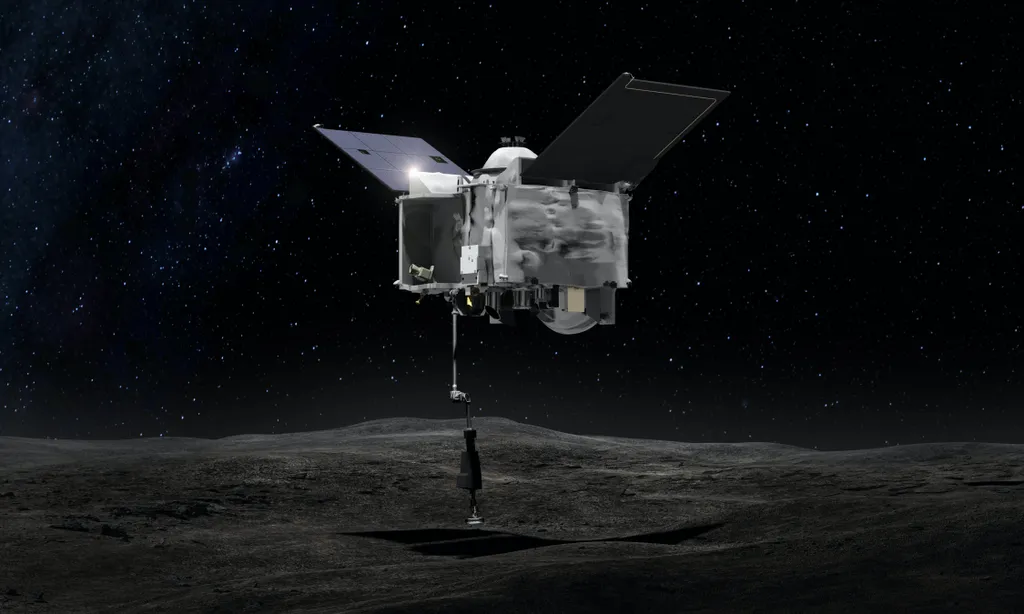
https://www.livescience.com/nasa-osi...n-attempt.htmlScientists discover new organ in the throat
A secret set of salivary glands has been hiding behind the nose.
This nasopharynx region — behind the nose — was not thought to host anything but microscopic, diffuse, salivary glands; but the newly discovered set are about 1.5 inches (3.9 centimeters) in length on average. Because of their location over a piece of cartilage called the torus tubarius, the discoverers of these new glands have dubbed them the tubarial salivary glands. The glands probably lubricate and moisten the upper throat behind the nose and mouth, the researchers wrote online Sept. 23 in the journal Radiotherapy and Oncology.https://www.livescience.com/new-salivary-gland.htmlBird flies 7,500 miles nonstop, breaking world record
Staying in the air for 11 days straight, a bar-tailed godwit flew from Alaska to New Zealand.

A bar-tailed godwit (Limosa lapponica) just flew for 11 days straight from Alaska to New Zealand, traversing a distance of 7,500 miles (12,000 kilometers) without stopping, breaking the longest nonstop flight among birds known to scientists, The Guardian reported.
Bar-tailed godwits are "big, noisy and cinnamon-colored," according to the National Audubon Society. And they are known to undertake impressive migrations between Alaska and New Zealand, flying thousands of miles without stopping. But one particular bird, driven by easterly winds that prolonged his journey, flew longer than any of his kind known to date.
The scientists tracked this particular male godwit — known as "4BBRW" for the colored identification rings on its legs, stacked blue, blue, red and then white — through its onboard satellite tag.
https://www.livescience.com/bar-tail...rd-flight.htmlMeet the zeptosecond, the shortest unit of time ever measured
Scientists have measured the shortest unit of time ever: the time it takes a light particle to cross a hydrogen molecule.
That time, for the record, is 247 zeptoseconds. A zeptosecond is a trillionth of a billionth of a second, or a decimal point followed by 20 zeroes and a 1. Previously, researchers had dipped into the realm of zeptoseconds; in 2016, researchers reporting in the journal Nature Physics used lasers to measure time in increments down to 850 zeptoseconds. This accuracy is a huge leap from the 1999 Nobel Prize-winning work that first measured time in femtoseconds, which are millionths of a billionths of seconds.
It takes femtoseconds for chemical bonds to break and form, but it takes zeptoseconds for light to travel across a single hydrogen molecule (H2). To measure this very short trip, physicist Reinhard Dörner of Goethe University in Germany and his colleagues shot X-rays from the PETRA III at Deutsches Elektronen-Synchrotron (DESY), a particle accelerator in Hamburg.
https://www.livescience.com/zeptosec...-measured.htmlTurbulent environment set the stage for leaps in human evolution 320,000 years ago
At a site in Kenya, my colleagues and I have been working on this puzzle for decades. It’s a place where we see big changes happening in the archaeological and fossil records hundreds of thousands of years ago. But what external factors drove the emergence of behaviors that typify how our species, Homo sapiens, interacts with its surroundings?
People thrive all across the globe, at every temperature, altitude and landscape. How did human beings become so successful at adapting to whatever environment we wind up in? Human origins researchers like me are interested in how this quintessential human trait, adaptability, evolved.
At a site in Kenya, my colleagues and I have been working on this puzzle for decades. It’s a place where we see big changes happening in the archaeological and fossil records hundreds of thousands of years ago. But what external factors drove the emergence of behaviors that typify how our species, Homo sapiens, interacts with its surroundings?
We wanted to know if we could connect what was happening in the environment at the time to these shifts in technology and the human species that lived there. Based on our analysis, published in the journal Science Advances, we conclude that the roots of Homo sapiens‘ evolutionary adaptations stem from our ability to adjust to environmental change.
At Olorgesailie, our scientific team has found evidence that’s potentially related to the origin of Homo sapiens in the form of a critical transition from one technology to another.
The older technology is typified by large, oval cutting implements called handaxes. Typical of what’s called Acheulean stone technology, nearly two dozen layers of these handaxes and other Acheulean tools have been unearthed at Olorgesailie. They span an immense period of about 700,000 years, covering a time when fossil remains show that the hominin species Homo erectus and Homo heidelbergensis inhabited eastern Africa.
The last Acheulean archeological sites at Olorgesailie are 500,000 years old, at which point there is a frustrating 180,000-year gap in these sediments caused by erosion. The archaeological record starts up again around 320,000 years ago, as sediments began to fill in the landscape.
... So here we had the extinction of the Acheulean way of life as well as its replacement by dramatically new behaviors including technological innovations, intergroup exchange of obsidian and the use of pigments. But we had no way to examine what happened in the 180,000-year gap when this transition took place. ...
... The sediment record showed that during the era 1 million to 500,000 years ago, when Acheulean toolmakers were busy in the Olorgesailie basin, ecological resources were relatively stable. Fresh water was reliably available. Grazing zebra, rhinoceros, baboons, elephants and pigs altered the regional vegetation of wooded grassland to create short, nutritious grassy plains.
And then what happened in the time gap?
The core is very well preserved in the previously mysterious time interval. We determined that right around 400,000 years ago, a critical environmental transition took place. From a relatively stable setting, we started to see repeated fluctuation in the vegetation, available water and other ecological resources on which our ancestors and other mammals depend.
According to the anthropological literature, hunter-gatherers today and in recent history respond to periods of uncertain resources by investing time and energy to refine their technology. They connect with distant groups to sustain networks of resource and information exchange. And they develop symbolic markers that strengthen these social connections and group identity.
Sound familiar? These behaviors resemble how the ancient Middle Stone Age lifestyle at Olorgesailie differed from the Acheulean way of life.
https://www.livescience.com/turbulen...evolution.html'Starman' just zipped past Mars in his rapidly-decaying Tesla Roadster
He probably doesn't look so pretty anymore.
Starman — the dummy riding a cherry-red Tesla Roadster through space — has made his closest approach ever to Mars.
That electric convertible with its mannequin passenger bolted to the top of a Falcon Heavy rocket as a stunt during the SpaceX rocket's first test launch Feb, 6, 2018. (It's common for test launches to include heavy payloads, but they're usually more boring than cherry-red sportscars.) Two years later, the Falcon Heavy upper stage and the vehicle at its tip are making their second trip around the sun.
... At this point, if you were to go look at the Roadster, it probably would look pretty different. As Live Science reported in 2018, the harsh solar radiation environment between the planets would probably have wrecked all the exposed organic materials (red paint, rubber tires, leather seats and the like), breaking the carbon bonds that hold them together. And without Earth's protective atmosphere and magnetic shielding, even the robust plastics in the windshield and carbon fiber materials would start to disintegrate. Over the course of decades or centuries, the car should be reduced to its aluminum frame and sturdiest glass parts — assuming none of them get destroyed in impacts with passing space rocks
Gassho, JYou can't squish this 'iron' beetle. Now, scientists know why.
Hardened forewings protect the beetles against piercing and crushing.
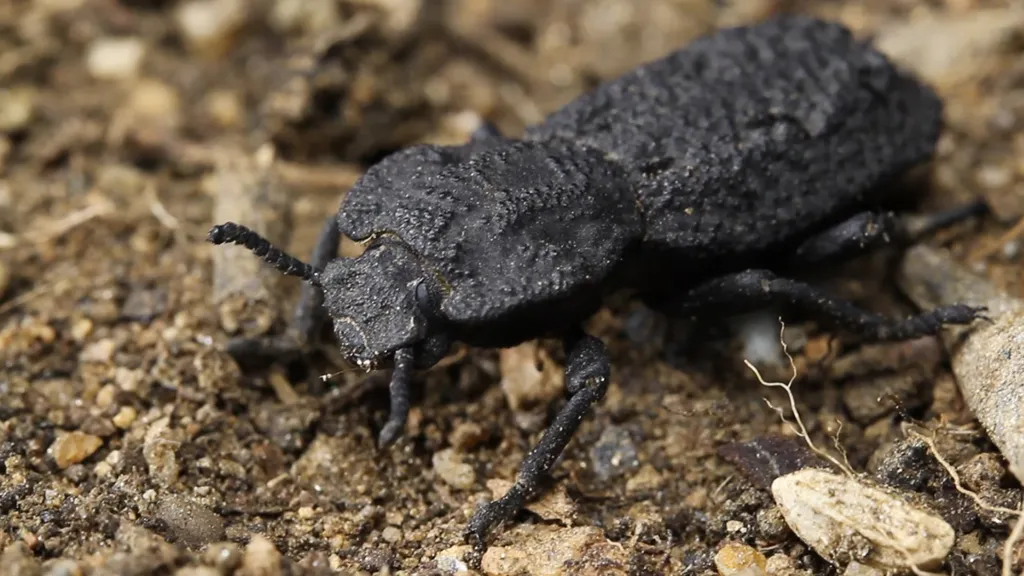
Diabolical ironclad beetles are almost unbreakable — you can smack them, stomp on them or run them over with a car, and they'll scamper away uncrushed.
Now, scientists know why these beetles' outer wing cases, known as elytra, are so tough — they're made up of a series of smoothly interlocking puzzle parts; the geometry and internal structure of this "jigsaw" design increase the strength of the beetle's armor.
Ironclad beetles (Phloeodes diabolicus) measure about 0.6 to 1 inch (15 to 25 millimeters) in length, and are found in woodland habitats in western North America, where they live under tree bark. Though their ancestors could fly, ironclad beetles lost their flight capabilities long ago, and their elytra are fused together, forming a crush-resistant shield.
... The researchers performed compression tests on the beetles to see just how much force those shields could withstand before cracking. They discovered that the "iron" beetles could resist continuous forces up to 149 newtons, or 33 lbs. (15 kilograms). This was about 39,000 times the beetles' body weight, and more than twice as much force than other species of terrestrial beetles can endure, according to the study.
Microscopic analysis of exoskeleton cross-sections showed lateral support structures that made some parts of the elytra stiffer than others, to distribute weight uniformly over the beetle's back and protect its organs. And further reinforcement came from the seam where the elytra fused together.
In the ironclad beetle's flying relatives, the elytra notch together in "a tongue-and-groove design," allowing them to smoothly open, close and release the lower wings for flight, the researchers reported. But in ironclad beetles, the fused elytra fit together like pieces in a jigsaw puzzle along the length of the insect's abdomen. The protruding parts of these interlocking pieces, called blades, also distribute stress across the exoskeleton, preventing it from cracking.
https://www.livescience.com/unbreakable-beetle.html
STLahALL OF LIFE IS OUR TEMPLEComment

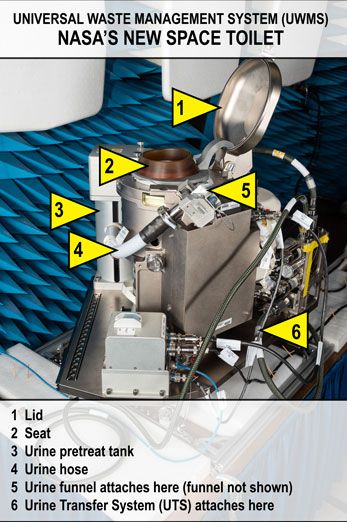


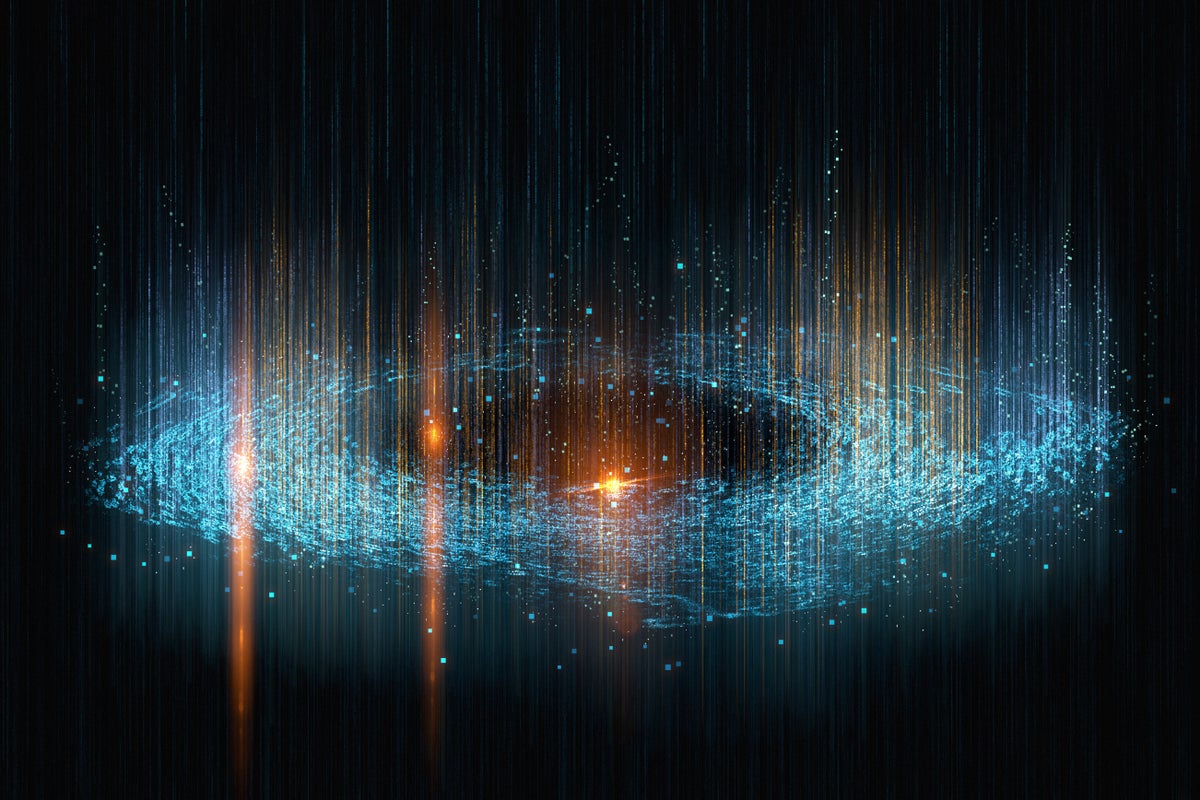

Comment